I remember the time when football / soccer was a male dominated industry enjoyed with male friends and even complete strangers. Season after season men / boys left their females at home whilst they went off for a spot of male bonding byway of the great game. Then around ten years ago the men from the telly decided they needed to bring football to a wider audience. So media networks mounted a campaign whereby famous footballers were given makeovers and center stage in magazines, newspapers, TV news etc. Women became increasingly more attracted to the game and footballers... Today football just wouldn't be the same without women... So thank you ladies...
Monday 24 May 2010
Football Poems - 101
Soccer, the beautiful game, the players love to run,
it's all about the playing, and that's what makes it fun.
Soccer is a game of opportunity with equal chance for all,
give everybody a chance to pass, and shoot that precious ball.
If you think she's Mia Hamm, most likely that she's not,
so don't deprive her teammates a chance for a shot.
Each player brings to the game, the desire, and the chance,
more than anything it's the confidence, that you must enhance.
Don't look to your great Aunt Sally, she may be your biggest fan,
but she won't supply the answers, your soccer players can.
Your team is tenacious, flexible and soccer they know about,
give them a chance and they'll show you, there's no need to doubt.
Not one, not two not three alone, can put the ball on net,
it's the 7, the 9 and 11 together, their success you sure can bet.
On the field, it can be a battle and sometimes she'll lose the fight,
don't worry; she's confident, for that second chance to make it right.
So if she loses the ball to an opponent, no that can't be fun,
but turnovers come in many forms, so don't focus on the one.
Each player has a purpose and that you must know well,
put each player where she's best suited, somewhere she'll excel.
Be patient, don't keep looking at your watch because in time they'll show you their stuff,
because as a coach deep down you know, that seven minutes just isn't enough
Monday 17 May 2010
The Football Shirt (in Brief)
Football Shirts
The classic football shirt is usually short sleeved in the spring and summer months, and in the fall and winter players prefer a long sleeve football shirt. These shirts were originally made from cotton and quite heavy, but today football shirts are made from polyester and nylon as both fabrics are lighter in weight. Previously the shirts even had buttoned collars, but nowadays the shirts are button-less and sometimes even collarless. In Europe football shirts are worn for soccer matches and a soccer shirt is known as a football shirt!A Number on the Back
On August 28th 1938 numbers on the back of football shirts also known to some as "football kits" became fashionable. Arsenal and Chelsea both used numbered shirts in their league games. In 1939 the Football League Management Committee introduced numbering on player's shirts. Since it is difficult to associate a number with a position in the game, only the goalkeeper wears number 1. In 1965 substitutes for the outfield started to wear the numbers 12 and 14, and the reserve goalkeeper always wears the number 13.
Replica Kits
In 1954 the FIFA World Cup required teams to wear a squad numbering system, so the players on a nation's squad all used the same shirt numbers for all the tournaments. Sales of these replica kits grew although now that there was squad numbering on the back of the player's shirts, the numbers were not as meaningful as before.
Players Names on the Shirts
On April18th 1993, The League Cup saw the names of each player now being printed on the back of their shirts, and from 1993-1994 Premiership squad numbers and names were also printed on the shirts. The names of the players and the numbers of the players on the football shirts were first introduced at the U.S.A. World Cup Final Tournament in 1994.
By FootballSEO
Wednesday 12 May 2010
World Cup Facts - Upsets
USA 1-0 England (1950 group stage) England had missed out on the first three World Cups, largely on the English FA's assumption that they were too good for the competition, but there was to be a rude awakening in their inaugural tournament. After winning their first match 2-0 against Chile, England suffered abject humiliation in the second when a part-time USA side beat them with a solitary goal from Haitian-born Joe 'Larry' Gaetjens in the 38th minute. The English public was incredulous, and a common story is that many believed the newspaper headlines were a misprint and that England had won the match 10-1, but England were beaten and failed to emerge from the group. Gaetjens, meanwhile, received little attention in America and eventually returned to Haiti, where he disappeared after protesting against dictator Francois
Brazil 1-2 Uruguay (1950 final) The Brazilians, playing on home soil, were in blistering form as they edged towards their first World Cup final. They had won four of their five games, opening with a 4-0 victory over Mexico and winning their two fixtures going into the final 7-1 and 6-1 against Sweden and Spain. As they took to the field at Rio's Estadio do Maracana, the general feeling was that Uruguay would be lambs to the slaughter. Coach Juan Lopez apparently took that view and told the players to defend for their lives. A Uruguay official reportedly told the players that if they lost by fewer than four goals, the team's honour would be preserved. The Uruguay captain, Obdulio Varela, disagreed and, in the dressing room ahead of the match, said they must attack. "If we play defensively against Brazil, our fate will be no different from Spain or Sweden," he said. "Boys, outsiders don't play. Let the show begin." After going a goal down, Uruguay stunned the 174,000-strong crowd by coming back to win 2-1. The game is still known as the Maracanazo - or 'Maracana Blow' - in Brazil and Varela later said that only three people had silenced the Maracana: "The Pope, Frank Sinatra and me."
West Germany 3-2 Hungary (1954 final) The Hungarian 'Golden Team', led by Ferenc Puskas, are widely considered one of the greatest of all time. They had won every game en route to the '54 final, including an 8-3 victory over the Germans in the first group stage. Little wonder, then, that West Germany's triumph became known as the 'Miracle of Berne'. Puskas had returned from injury to feature in the game but it was not enough, with his disallowed late equaliser one of a series of refereeing decisions to go against Hungary.
North Korea 1-0 Italy (1966 group stage) North Korea return to the World Cup this summer after a 44-year absence, and they have plenty to live up to if they are to match the class of '66. Starting the tournament as 1,000-1 outsiders, they bounced back from a 3-0 defeat to Soviet Union in their opening game to draw with Chile and then stun two-time champions Italy to progress to the knockout rounds. Inspired, as they are today, by a 'Great Leader', the country almost went a step further as they led Portugal 3-0 in the second round, but Eusebio scored four goals as Portugal came back to win 5-3.
East Germany 1-0 West Germany (1974 group stage) During the team's 38-year existence, East Germany qualified for just one World Cup: the 1974 tournament in West Germany. As it turned out, the draw for the first group stage of the tournament actually pitted them against West Germany, too, setting up the only significant meeting between the sides in history. After a solid first two games, both teams had already qualified for the second group stage, but this meeting in Hamburg was about much more than sporting success. The West Germans, winners of the 1972 European Championship, were said to have dismissed the East's chances ahead of the match, but they proved tough to break down and, in a match low on quality with a slew of missed chances, Jurgen Sparwasser's 77th-minute strike made the difference. The goal was used for political purposes for years afterwards, but Sparwasser denied suggestions he had been financially rewarded for his efforts and, feeling the strain of continued state exploitation, fled to West Germany shortly before the fall of the Berlin Wall. "For us, it was just a game," he said in a 2006 interview. "Nothing political."
Algeria 2-1 West Germany (1982 group stage) Algeria shocked the world with victory over the European champions in their first ever World Cup match, with Lakhdar Belloumi scoring the winner just seconds after Karl-Heinz Rummenigge's second-half equaliser. "It is the most beautiful memory in Algerian football," Belloumi later said. However, Algeria's joy turned to indignation when they were edged out of a place in the second round on goal difference as, in the final match of the group, West Germany and Austria seemingly agreed to play out the 1-0 German win in that would see both teams through. After Horst Hrubesch's goal in the tenth minute, the sides knocked the ball around aimlessly, prompting anger even among Germans and Austrians. FIFA later changed the rules to ensure the final games of each group would be played simultaneously to avoid a repeat, but Algeria's dream was over.
Spain 0-1 Northern Ireland (1982 group stage) While hosts Spain had already confirmed their passage into the second group stage, there had been little expectation of an upset when they faced Northern Ireland. However, Gerry Armstrong scored the only goal of the game following a goalkeeping error just after the break to see his team top the group. 'That night in Valencia' remains a key moment in Northern Irish history and Armstrong later told the BBC: "It's always mentioned when there's a World Cup here, I think to give inspiration to a lot of the smaller countries trying to emulate what Northern Ireland achieved in '82."
Cameroon 1-0 Argentina (1990 group stage) The defending champions, still featuring the great Diego Maradona, were fully expected to cruise to victory over Cameroon in their opening match at Italia '90. Cameroon, though, were made of sterner stuff than anyone had predicted. Down to ten men on the hour, the Indomitable Lions nonetheless won out as a goalkeeping error saw Francois Omam-Biyik direct a header into the net on 67 minutes. They were even down to nine men in the dying moments but held on to record one of the great upsets.
Republic of Ireland 1-0 Italy (1994 group stage) It was in New Jersey's Giants Stadium that David slayed Goliath in Group E's opening match thanks to a shock long-range effort from Glasgow-born Ray Houghton. Manager Jack Charlton took Ireland through to the second round of the tournament with a host of converted Brits and, together, they gained revenge for their quarter-final exit to the Italians four years earlier. Liverpool-born John Aldridge said later that he felt the Italians were "complacent" in the match, which proved to be Italy's last defeat before losing the final on penalties to Brazil.
Senegal 1-0 France (2002 group stage) World Cup and European Championship holders France endured a stunning first-round exit in 2002 as they failed to score a single goal in the tournament. It would be naive to downplay the quality of Senegal, who were finalists in that year's African Nations Cup and boasted the African Player of the Year in El-Hadji Diouf, but the absence of Zinedine Zidane through injury was widely credited for the loss. "We needed Zizou to keep the ball," defender Frank Leboeuf said. "The Senegalese have had only one chance and they have scored. On top of that, it was a silly goal."
South Korea 2-1 Italy (2002 second round) and South Korea 0-0 (5-3 pens) Spain (2002 quarter-finals) Both matches were certainly aided by favourable refereeing decisions but, nonetheless, South Korea pulled off two stunning upsets on home soil to go further than any other Asian side to date. The country's president, Kim Dae-Jung, said reaching the semi-finals marked the "happiest day since Dangun" founded the country in 2333 BC, while coach Guus Hiddink was, more conservatively, just "happy for the boys".
Tuesday 11 May 2010
The Meaning of Color
Where does color exist you may ask? Some might say that color exists in the surface of objects or the texture of things. Well whatever you may think, let me tell you what the real answer is. Color exists in the eye of the beholder. Color is generated behind your eye and in the brain of each individual. Perhaps it is one millionth of a bit different in each person, but generally the color that we see, is dependant upon our eyes.
Color has a couple important aspects or features to it. There is the physical aspect of color as well as the psychological effect. We could also include the emotional or historical affect of color on us but for now we will just focus on the first two.
The physical aspect of color regards the perception and physics, while the psychological aspect regards the way in which we think about color and the role it plays on our minds. Color is defined as a component of light. This is an interesting fact when we think about it. Color is defined according to light. In a way this makes a lot of sense.
If there is no light, there is no color, but only blackness. For those that are saying, well black is a color is it not? No, black is not a color. Black is the absence of color and is a shade. Depending on how much light is taken into our eyes and the amount of tone, shading, or tint, we will see a variety of color. This variety of color has millions of different shades.
There are three primary colors of light. These colors are red, green, and blue. These three colors are the basis upon which every single other color is formed. This is accomplished by mixing the red, green, and blue together. Other colors that we know well such as yellow, violet, and orange can be accomplished by mixing these primaries.
To demonstrate how we see color it is important to understand that some surfaces refract or absorb certain colors better than other surfaces do. If you are wearing a red shirt, the reason we see your shirt as a red color is because that is the only color the shirt does not absorb. The red shirt is absorbing all the green and blue wavelengths. This is why the shirt is a red one. Does this make sense to you? Black reflects no light and this is why we see black. The same goes for nighttime. If there is no sunlight, there is no color.
Monday 10 May 2010
Gotta Have It,,,
Football fans love to show their colors so we scaled the internet for some cool goodies.
Sunday 9 May 2010
1966 FIFA World Cup - England
The Tournament
The 1966 FIFA World Cup, the eighth staging of the World Cup, was held in England from 11 July to 30 July. England was chosen as hosts by FIFA in August 1960 to celebrate the centenary of the standardisation of football in England. England won the final, beating West Germany 4–2, giving them their first (and to date, only) World Cup win, and becoming the first host to win the tournament since Italy in 1934.
Qualification
The 1966 World Cup was the subject of bitter disagreement before a ball was ever kicked. Sixteen African nations boycotted the tournament in protest of a 1964 FIFA ruling that required the champion team from the African zone to enter a playoff round against the winners of either the Asian or the Oceania zone in order to win a place at the finals. The Africans felt that winning their zone should have been enough in itself to merit qualification for the finals. Despite the Africans' absence, there was another new record number of entries for the qualifying tournament, with 70 nations taking part. After all the arguments, FIFA finally ruled that ten teams from Europe would qualify, along with four from South America, one from Asia and one from North and Central America.
Summary
The 1966 World Cup had a rather unusual hero off the field, a dog called Pickles. In the build up to the tournament the Jules Rimet trophy was stolen from an exhibition display. A nation wide hunt for the icon ensued. It was later discovered wrapped in some newspaper as the dog sniffed under some bushes in London. The FA commissioned a replica cup in case the original cup was not found in time. This replica is held at the English National Football Museum in Preston, where it is on display.
First Round
The format of the 1966 competition remained the same as 1962: 16 qualified teams were divided into four groups of four. The top two teams in each group advanced to the quarter-finals. The draw for the final tournament, taking place on 6 January 1966 at the Royal Garden Hotel in London was the first ever to be televised, with England, West Germany, Brazil and Italy as seeds.
Despite achieving record attendances for the time, 1966 was a World Cup with few goals as the teams began to play much more tactically and defensively. This was exemplified by Alf Ramsey's England as they finished top of Group 1 with only four goals to their credit, but having none scored against them. Uruguay were the other team to qualify from that group at the expense of both Mexico and France. All the group's matches were played at Wembley Stadium apart from the match between Uruguay and France which took place at White City Stadium.
In Group 2, West Germany and Argentina qualified with ease as they both finished the group with 5 points, Spain managed 2, while Switzerland left the competition after losing all three group matches. FIFA cautioned Argentina for its violent style in the group games, particularly against the scoreless draw with West Germany.
In the northwest of England, Old Trafford and Goodison Park played host to Group 3 which saw the two-time defending champions Brazil finish in third place behind Portugal and Hungary, and be eliminated along with Bulgaria. Brazil were defeated by Hungary and Portugal in controversial wins. Portugal appeared in the finals for the first time, and made quite an impact. They won all three of their games in the group stage, with a lot of help from their outstanding striker Eusébio, whose nine goals made him the tournament's top scorer.
Group 4, however, provided the biggest upset when North Korea beat Italy 1-0 at Ayresome Park, Middlesbrough and finished above them, thus earning qualification to the next round along with the USSR. Chile finished bottom of the group.
Quarterfinals, Semifinals, and third-place match
The quarter-finals provided a controversial victory for West Germany as they cruised past Uruguay 4–0; the South Americans claimed that this occurred only after the referee (who was Jim Finney, from England) had not recognised a handstop by Schnellinger on the goal line and then had sent off two players from Uruguay: Horacio Troche and Héctor Silva. It appeared as though the surprise package North Korea might do the same to Portugal when after 22 minutes they were in the lead 3–0. It fell to one of the greatest stars of the tournament, Eusébio, to change that. He scored four goals in the game and with José Augusto adding a fifth in the 78th minute, one of the most incredible comebacks was complete.Meanwhile in the other two games, Ferenc Bene's late goal for Hungary against the USSR, who were led by Lev Yashin's stellar goalkeeping, proved little more than a consolation as they crashed out 2–1, and the only goal between Argentina and England came courtesy of England's Geoff Hurst. During that controversial game (for more details see Argentina and England football rivalry), Argentina's Antonio Rattín became the first player to be sent off in a senior international football match at Wembley.Rattín at first refused to leave the field and eventually had to be escorted by several policemen. After 30 minutes England scored the only goal of the match. This game, even today, is called el robo del siglo (the robbery of the century) in Argentina.
At this point, all semifinalists were from Europe. The first semifinal between England and Portugal was controversial as well. Liverpool was the original venue for the first semifinal. However, due to intervention of the English officials, the venue changed to Wembley. Bobby Charlton scored both goals in England's triumph against Portugal. Portugal's goal came from a penalty kick in the 82nd minute after a handball by Jack Charlton on the goal line. The other semi-final also finished 2–1: Franz Beckenbauer provided the winning goal for West Germany as they beat the USSR. Portugal went on to beat the USSR 2-1 to take third place.
Final
London's Wembley Stadium provided the venue for the final, and 98,000 people crammed inside to watch. After 12 minutes 32 seconds Helmut Haller had put West Germany ahead, but the score was levelled by Geoff Hurst four minutes later. Martin Peters put England in the lead in the 78th minute; England looked set to claim the title when the referee awarded a free kick to West Germany with one minute left. The ball was launched goalward and Wolfgang Weber managed to poke it across the line, with England appealing in vain for handball as the ball came through the crowded penalty area. With the score level at 2–2 at the end of 90 minutes, the game went to extra time. In the 98th minute Hurst found himself on the score sheet again; his shot hit the crossbar, and bounced down and hit the ground either onto or just over goal line. Whether the ball actually crossed the goal line or not has been a matter of discussion for decades, and this goal, known as the "Ghost Goal", has become part of World Cup history. Recent digitally-enhanced footage is said to clearly illustrate that Geoff Hurst's second goal did not cross the line. In the last minute it was Hurst again, who dribbled easily through the German half to net his third goal, just as the gathered crowd invaded the pitch to celebrate with the team, thus cementing the victory for England with another goal. This made Geoff Hurst the only player ever to have scored three times in a World Cup final.
BBC commentator Kenneth Wolstenholme's description of the match's closing moments has gone down in history: "Some people are on the pitch. They think it's all over ... [Hurst scores] It is now!".
England received the recovered Jules Rimet trophy from Queen Elizabeth II and were crowned World Cup winners for the first time.
Mascot
World Cup Willie, the mascot for the 1966 competition, was the first World Cup mascot, and one of the first mascots to be associated with a major sporting competition. World Cup Willie is a lion, a typical symbol of the United Kingdom, wearing a Union Flag jersey emblazoned with the words "WORLD CUP".
Subscribe to:
Posts (Atom)






























_fans_-_FIFA_World_Cup_2006_(03).jpg)





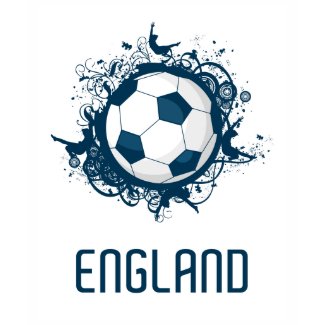
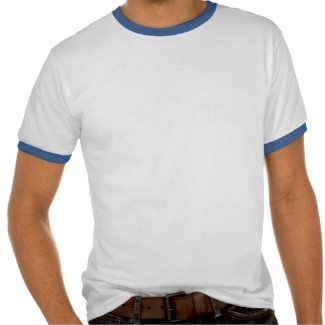
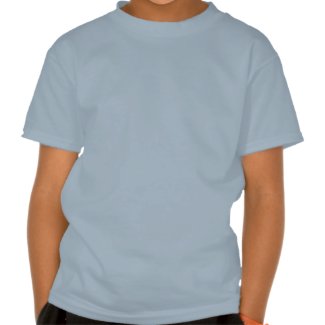
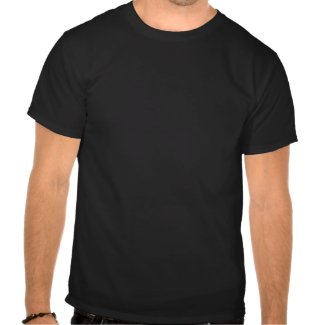
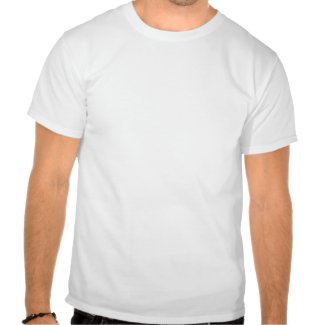


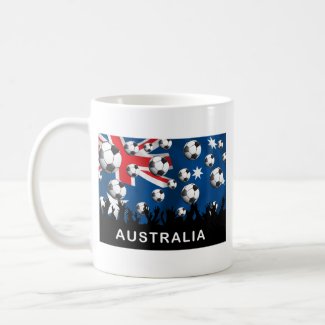





.JPG)


















